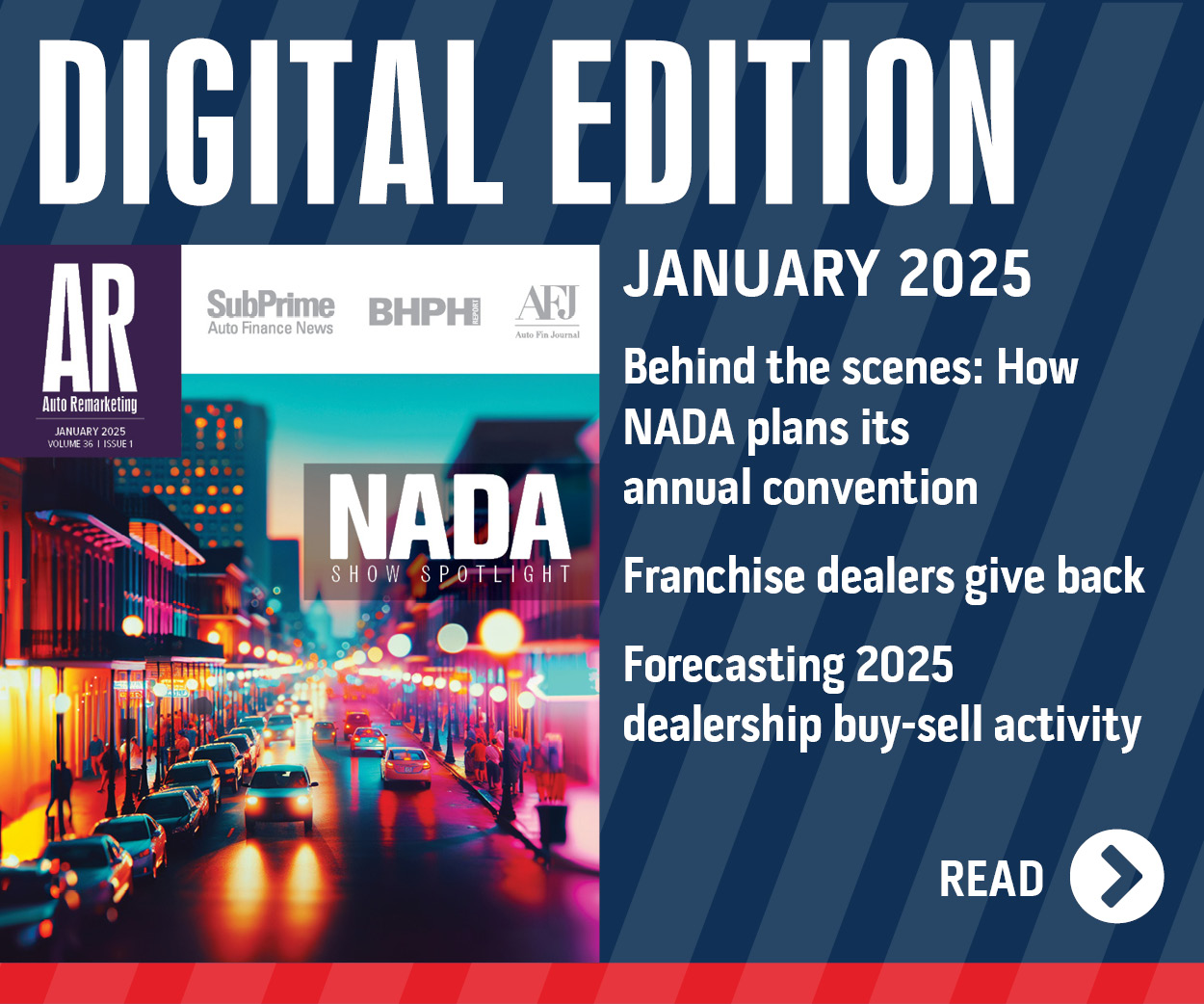Hidden Indicators: Leasing May Experience Some Significant Indigestion

For those of our readers who participated in the remarketing of off-lease vehicles in the late 1980s and early 1990s, you will remember the scenario.
Vehicle manufacturers, through their captive finance companies, in a effort to keep the factories running at full capacity, and with a goal of maintaining and gaining market share, offered aggressive incentives, in the forms of cash-back, enhanced lease residuals and rate subvention. Each of these tools translated into lower monthly lease payments, with the goal of attracting additional conquest sales. It was a zero-sum game.
Demand was finite. Some manufacturers won at the expense of others. That fact simply impelled those who were losing market share to further enhance their product offering. It created a vortex that resulted in the balance sheets of most manufactures and their captives to bleed from the gills.
At that time, predicated on union contracts, from a bottom line perspective, it was cheaper to keep the production lines humming and squeeze margins, than it was to close down lines and continue to pay idle workers. Whatever the rationale, however, the results were the same — catastrophic losses.
Let us also remember that the banks also participated in vehicle leasing. Based on the aggressive programs of the captive finance companies, banks felt compelled to follow suit.
Most banks incented their teams so that they could line their pockets if they generated new lease contracts. And guess what? The teams followed the money. Higher residuals translated to more bank and independent finance company paper being purchased by the dealers.
Since the lease profitability model front-end loads the balance sheets, senior executives were smiling. At lease termination, senior management was twisting in the wind.
The Lesson at Lease Termination
The flood of off-lease vehicles was dumped on their doorsteps. The market could not absorb the volume. Under normal market conditions, the funding sources would have been challenged, upon sale, to recapture the aggressive residual values.
That fact, exacerbated by the increased volume of off-lease vehicles led to billions of dollars of losses.
The manufacturer losses were somewhat mitigated by the fact that they had the potential for two sources of profitability — the spread between manufacturing cost and dealer invoice, and on the financing. However, the gains on sale to the dealers did not offset the residual losses. Most manufacturers lost more on the gap between lease residual and sale of the off-lease vehicle that they initially gained on the sale of the vehicle to the dealer.
Banks and independents, on the other hand, had only one source of potential profitability: finance income. On a portfolio basis, the losses on the sale of the off-lease vehicle far exceeded the income from the lease contract.
Unless a bank had created a private-label program with the manufacturer to fund contracts with the manufacturer providing some level of financial support to cover the predicted loss that the bank would incur on the sale of the off-lease vehicle, the bank experienced significant economic pain. Even the ones that did have a private-label program experienced losses, for the manufacturer did not entirely close the gap between lease residual and sale price — net of remarketing expense.
Today
The past is prologue. Those who do not learn from history are doomed to repeat it. In our industry we seem to suffer from amnesia. Vehicle financing is a fairly simple product.
We, the enemy, feel compelled to tweak the product in an effort to build a better mouse trap. Those who currently craft the leasing product were most probably not involved in the automotive finance industry 25 years ago; If they were, their voices have been silent.
Let’s examine the state of the union. From the data collected by CNW Research, the average discount across all make/models on new-vehicle sales is 8.74 percent, or neatly $4,000. Ford F-150, in its quest to remain the No. 1 selling vehicle, leads the way with 14.33 percent in incentives off MSRP.
For the economy car sector, incentives reduce transaction price by almost 12 percent of MSRP. When transaction prices fall, they put enhanced pressure on same make used-vehicle sales. Moreover, coupled with these discounts are programs such as zero percent financing or subvented interest rate financing. These two factors, introduced into the equation, add another layer to lower monthly payments.
This dynamic has a negative impact on used-vehicle pricing. The following example clearly demonstrates the inexorable link between new- and used-vehicle pricing.
New Vehicle
- MSRP: $30,000
- Transaction Price/Capitalized Cost (including factory and dealer incentives): $27,000
- Money Factor: .00125 or approximately 3 percent APR
- Lease Term: 36 months
- Residual Value: 50 percent or $15,000
- Monthly Payment: $385
3-Year-Old Used Vehicle (same make/model)
- Transaction Price – same make/model: $15,000
- Loan APR: 3 percent
- Term: 36 months
- Payment: $436
The consumer/borrower would have to finance for approximately 42 months to reduce the payment to reflect the lease payment on the new vehicle — and when the loan was paid off, he/she would be driving a 7-year-old vehicle.
This example also assumes “A” credit/ FICO score. If the APR were increased, obviously the gap between the monthly payments would widen. Will there be a compelling reason that drives used-car drivers to off-lease units?
Will the market support the $15,000 price of the used vehicle — will the market make adjustments based on the supply/demand curve and the implicit transaction price of the new vehicle?
Remember that lease residuals are calculated as a percentage of MSRP, not of transaction price. The vehicle in our example, in effect, has a lease residual of ~55.6 percent ($27,000 x 55.6 percent = $15,000). Will the market support this level of retention value? If we look to history, the answer is “doubtful.”
In short:
- Used-car monthly payments are bumping their heads against new-vehicle lease payments.
- Since markets are rational, used-vehicle values will weaken, and there will be a negative gap created between residuals at lease termination and market values.
- Exacerbating the challenge are four other factors:
- The economy is not yet robust. Indicative of this reality is the fact that in Tampa, Fla., the “affordable” purchase price for a vehicle is $14,209, with 20 percent down (Interest.com)
- Average amount financed for new-vehicle transaction: $27,430
- 72-plus month loans approximate 33 percent of all new-vehicle loans, and all loans have an average duration of 66 months (J.D. Power)
- Leasing represents +/-26 percent of new-vehicle sales
The salient question: Will the supply of off-lease vehicles overwhelm the marketplace in an environment of challenged credit scores — and at a time when a third of the market is locked into long-term loans which effectively push them off dealer lots for a protracted period?
Storm clouds are already on the horizon. The fundamentals inherent in the linkage of new- and used-vehicle values are already rearing their ugly heads.
Once more, Art Spinella, president of CNW Research, in a recent article demonstrates how this linkage has already manifested itself. CNW conducted a study of lease contract residual values and compared them with projected vehicle values at lease termination. The results should be discomforting for portfolio managers. On an industry-wide basis, the analysis indicated that the average recapture percentage will be 85.88 percent.
Specifically, for a vehicle with a $15,000 residual value, the projected recapture would be $12,882 minus the termination fee, it applicable, plus expenses incurred in the remarketing process. For the premium sector, the percentage translates to thousands of dollars in potential losses on each vehicle. Parenthetically, CPO may cushion the blow, but will only modify the losses.
So, if the data proves to be predictive of future values, then the stars are aligned, history will repeat itself, and the automotive finance industry will be in for a bumpy ride. Hold on to your seats. We may be in for a blood bath. Look to the past as a valid indicator of the future.
Editor's Note: Stuart Angert was the chief executive officer of Remarketing Services of America from 1991 through 2006.

 View The Latest Edition
View The Latest Edition

